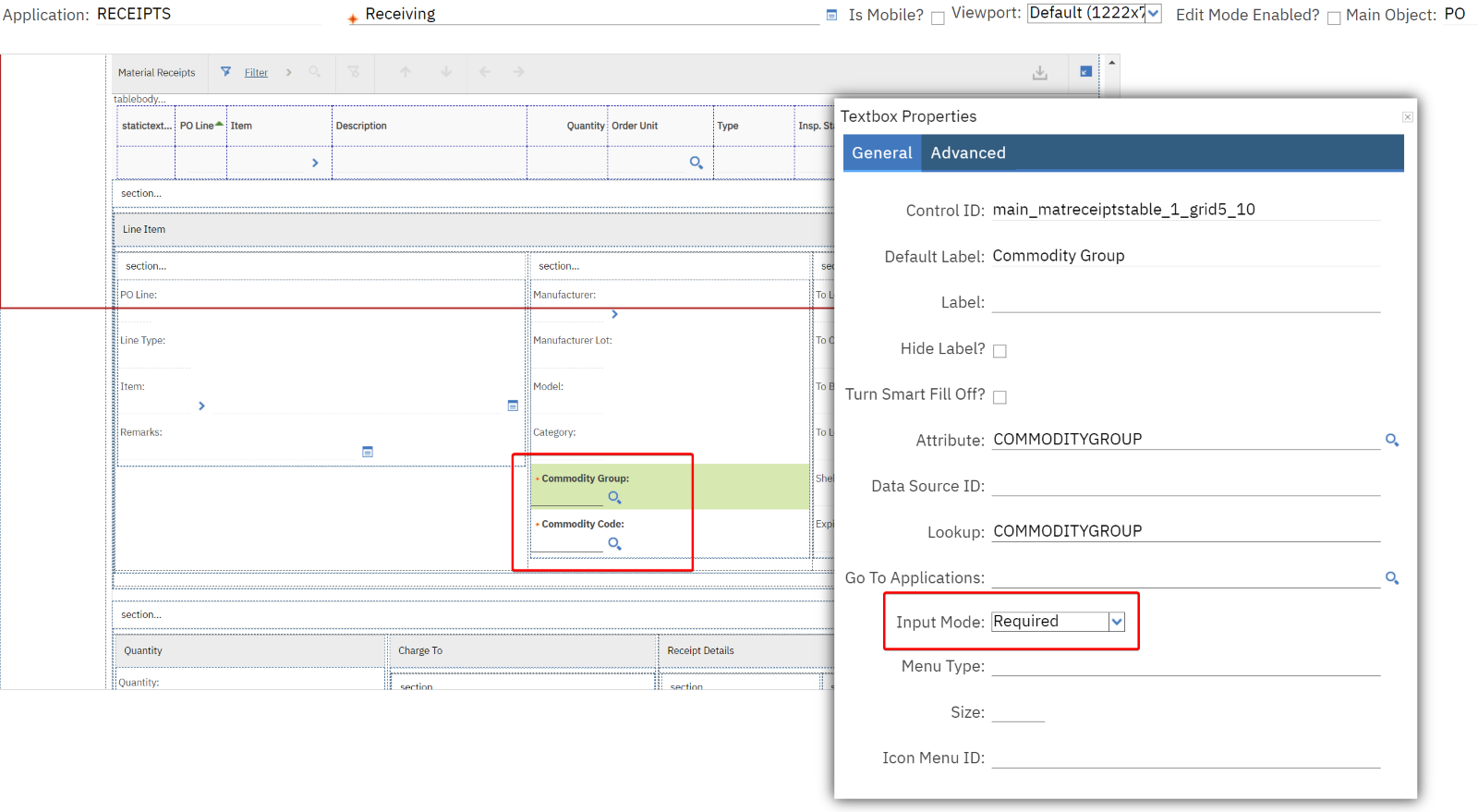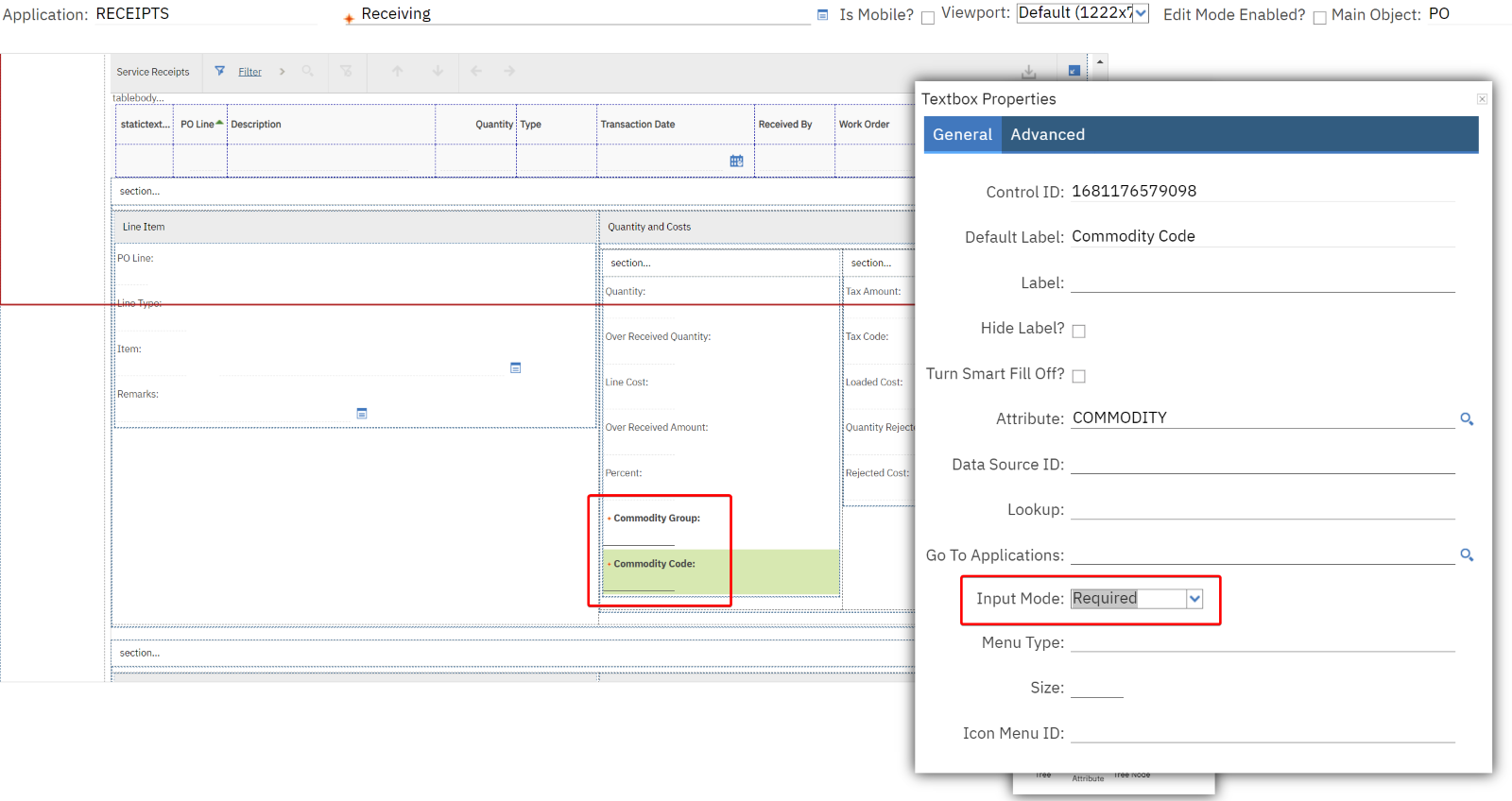Commodity Groups are created to identify a grouping of items, tools, or services. A commodity group contains a grouping of individual commodity codes. Classifying items, tools, services with commodity groups and commodity codes provides a way to analyse spending. First, a commodity group is defined, and then individual commodity codes are added and associated to the group. Some organisations align a component from their GL account string to their commodity groups/codes to analyse spending by product type and capture the commodity group and code on work order actuals for materials and services. In this example we will streamline the process entering the commodity group and code on receipts for direct issue items and services so that this information can flow to the actuals on the work order. The flow of the commodity group and code to the work order will not be covered in this post, only the capture of this information on the receipt line is covered.
The commodity group and code field live in the table details sections of the Material Receipts and Service Receipts tables on the Receiving application. To aid in the capture of the commodity details in the receipting process we will modify the Receiving application to ensure the commodity group and code are mandatory and auto expand the material and service receipts table detail section automatically to speed up the data entry process if the commodity details are missing from the receipt line. In this example we will show you how we can manipulate the table data bean associated with the Material and Service Receipts tables and expand the table detail section via a Maximo automation script.
1. Open the Application Designer application.
2. Find the RECEIPTS application.
3. Make the Commodity Group and Commodity Code fields mandatory on the Material Receipts tab, example shown below.

4. On the Service Receipts tab, you will need to add the Commodity Group and Commodity Code field to the screen as they will not be present. Make the fields mandatory.

5. Open the Automation Scripts application.
6. Create a script for an Attribute Launch Point on the MATRECTRANS object and POLINENUM attribute to automatically expand the Material Receipt details section upon selection of an PO order line.
Launch Point: FLD.MATRECTRANS.POLINENUM.ACTN
Launch Point Description: Material Receipt Purchase Order Line Number Action
Object: MATRECTRANS
Attribute: POLINENUM
Events: Run Action
Active: Yes
Script: FLD.MATRECTRANS.POLINENUM.ACTN
Script Description: Material Receipt Purchase Order Line Number Action
Script Language: python
Source Code:
7. Create a script for an Attribute Launch Point on the SERVRECTRANS object and POLINENUM attribute to automatically expand the Service Receipt details section upon selection of an PO order line.
Launch Point: FLD.SRVRECTRANS.POLINENUM.ACTN
Launch Point Description: Service Receipt Purchase Order Line Number Action
Object: SERVRECTRANS
Attribute: POLINENUM
Events: Run Action
Active: Yes
Script: FLD.SRVRECTRANS.POLINENUM.ACTN
Script Description: Service Receipt Purchase Order Line Number Action
Script Language: python
Source Code:
Once the above changes have been applied to Maximo, upon receipt of a direct issue purchase order line item or service the Material Receipts and Services Receipts table detail sections of the Receiving application will automatically expand if the commodity details are missing on the receipt line.
|
|
|
|
|
|
Jamie Pavleski | Senior Consultant |
|
|
|
Jamie Pavleski is an IBM Certified Deployment Professional (Maximo Asset Management v7.6 Functional Analyst) and has been working with IBM Maximo for the past thirteen years. He is a technical specialist with a sound knowledge of the software development life cycle (SDLC). This includes user requirement analysis, system design and architecture development, formal system testing and acceptance, database architecture and design, user interfaces, and object-orientated software components. Jamie has wide experience in MBO and integration framework customisation. Jamie has also been responsible for identifying areas for improvement and implementing application performance improvements. His industry experience with Maximo includes utilities, ports, education, government, airports, pulp and paper, and facilities management. |
|
Stay up-to-date with the latest news and receive notifications right to your inbox when new articles are published by subscribing now.